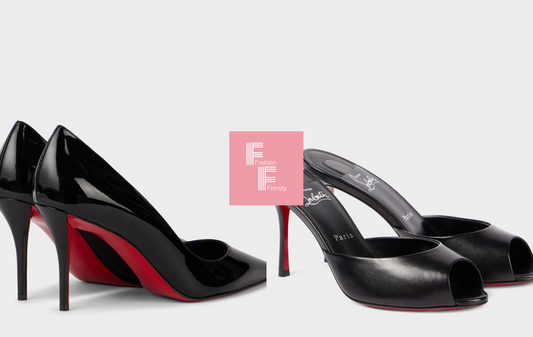Curling your hair can be a fun way to mix up your look, but the tools and methods you choose can significantly impact your hair's health. Fortunately, you can easily achieve beautiful curls without causing undue damage to your strands. This guide will walk you through various techniques, tools, and hair care tips that let you rock gorgeous curls without the guilt.
Understanding Your Hair Type

Different hair types respond uniquely to curling methods, so knowing your hair type is crucial before picking a curling technique.
Fine hair often benefits from lightweight products and less heat, while thick or coarse hair may require more heat and stronger holds. Curly or textured hair is already prone to frizz, so using a method that reduces damage is vital. Consider these factors:
- Fine Hair: Use lower heat and light products to avoid weighing strands down.
- Thick Hair: You can often handle higher heat but still need to use products that provide moisture.
- Curly Texture: Opt for techniques that don't disrupt your curl pattern too much.
Taking the time to understand your hair type can help you choose the most effective and gentlest curling methods.
Tools for Curling Your Hair

There are several tools you can use to curl your hair, and each works differently. Here are some popular options:
- Curling Wand: A curling wand is versatile and allows you to adjust the temperature. Opt for a ceramic or tourmaline wand for even heat distribution. Look for a barrel size that complements your desired curl type.
- Flat Iron: Believe it or not, your flat iron can double as a curling tool. Its sleek plates can create beautiful, loose waves, especially when you twist the tool while sliding it down the hair shaft.
- Rollers: Hot rollers are a classic but effective way to create curls without exposing your hair to high temperatures. They come in various sizes - larger rollers create looser curls, while smaller ones produce tighter curls.
- Waves of the Sea: An increasingly popular option, a waved crimper can create beachy waves with minimal heat exposure. Make sure to pick one that has ceramic plates to safeguard against damage.
Prepping Your Hair
Preparation is key to ensuring your curls remain intact and healthy. Follow these steps for the best results:
- Clean and Condition: Start with clean hair. Use a sulfate-free shampoo and a hydrating conditioner to maintain moisture levels in your strands.
- Heat Protectant: Before using any heat tools, apply a heat protectant spray or serum. This provides a barrier between your hair and the heat, minimizing potential damage.
- Drying: If you’re starting with wet hair, allow it to air-dry partially before applying heat. If using a blow dryer, use a diffuser attachment to avoid frizz and heat damage.

Curling Techniques That Minimize Damage
Now that you're equipped with the right tools and products, let's discuss techniques for curling your hair with minimal damage:
- Braid Wavy Curls: For a no-heat method, braid your slightly damp hair into multiple sections before bed. When you wake up and undo the braids, you’ll have soft, beautiful waves.
- Twisting: Take a small section of hair, twist it lightly, and wrap it around itself at the root. Use a bobby pin to hold it in place. Repeat this process in sections around your head. Let it sit while you go about your day or overnight for defined curls.
- Pin Curls: Similar to the twisting method, this classic technique involves rolling small sections of hair backward and pinning them to your scalp. Let them set for several hours or overnight before releasing for vintage-inspired curls.
-
Using a Curling Wand or Iron: The most common method is using heat. Here’s how to do it with minimal damage:
- Section hair into manageable pieces.
- Wrap a section around the wand or iron, holding for only 10-15 seconds.
- Release and let the curl cool in your hand for a minute before letting it drop.
- Cool Shot: After using any heat tool, switch to the cool shot setting if your tool has it. This helps set your curls and reduces damage by locking in the shape.
Maintaining Your Curls

After successfully curling your hair, there are a few steps to take to ensure your curls last and your hair stays healthy:
- Avoid Over-Manipulating: Try not to run your fingers through your curls too much. This can create frizz and lead to the curls falling flat more quickly.
- Use the Right Products: Choose products designed for curls. A lightweight styling cream or curl mousse can add definition without weighing your hair down.
- Care for Your Curls: Ensure hydration to avoid dryness and frizz. Use a moisturizing serum or oil on your ends, and consider sleeping on a silk pillowcase to prevent breakage while you rest.
- Refresh with a Spray: If your curls need reviving, lightly spritz with water or a curl-refreshing spray and scrunch to redefine them.
Conclusion
Curling your hair beautifully without inflicting damage is entirely achievable with the right tools, products, and techniques. Embrace experimentation - your hair is unique, and what works best for you may involve a bit of trial and error. Remember to treat your hair gently, prioritize hydration, and indulge in nourishing treatments regularly. With dedicated care and attention, you’ll be able to flaunt those stunning curls that turn heads while also cherishing your hair's health.











